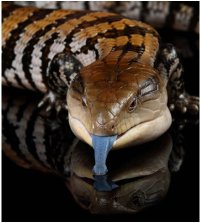 Introduction:
Introduction:
Reptiles are a diverse group of animals that have adapted to varied environments over millions of years. One among the key characteristics of reptiles is their methodology of breathing, which differs from other vertebrates similar to mammals and birds. Whereas most reptiles breathe by means of lungs, there are some exceptions that have gills for respiration. This study aims to discover the different respiratory adaptations of reptiles and the components that affect their breathing mechanisms.
Respiratory Adaptations in Reptiles:
Nearly all of reptiles, including snakes, lizards, turtles, and crocodiles, breathe with lungs. These lungs are relatively simple compared to mammals and birds, with sac-like constructions that develop and contract to attract in and expel air. Lung morphology varies among different species of reptiles, with some having extra advanced lung constructions that enable for environment friendly gasoline trade.
In distinction, there are just a few species of reptiles which have gills for respiration. For example, sea snakes and a few species of freshwater turtles have retained gills all through their lives. These gills are used to extract oxygen from water, allowing these reptiles to stay in aquatic environments. The presence of gills in these reptiles is an adaptation to their specific habitats and lifestyles.
Factors Influencing Respiratory Adaptations:
The presence of lungs or gills in reptiles is influenced by a combination of evolutionary historical past, environmental factors, and physiological wants. Reptiles that stay in terrestrial environments sometimes have lungs for respiratory, as they require an environment friendly respiratory system to extract oxygen from the air. On the other hand, reptiles which have adapted to aquatic environments might have gills or exotic pet keeping a mixture of lungs and gills to facilitate respiration in water.
Furthermore, the size and metabolic calls for of different reptile pet for beginners species also play a role in determining their respiratory adaptations. Bigger reptiles, corresponding to crocodiles, pet reptiles and amphibians might have larger and extra advanced lungs to support their greater oxygen requirements. In contrast, smaller reptiles, reminiscent of snakes and lizards, have smaller lungs that are ample for their metabolic wants.
Conclusion:
In conclusion, the respiratory adaptations of reptiles are various and replicate the big selection of habitats and lifestyles within this group of animals. Whereas most reptiles breathe with lungs, there are some exceptions which have developed gills for respiration in aquatic environments. The presence of lungs or gills in pet reptiles and amphibians is influenced by evolutionary history, environmental elements, and physiological needs. Further research is required to discover the respiratory adaptations of reptiles in additional depth and to understand how these adaptations have advanced over time.